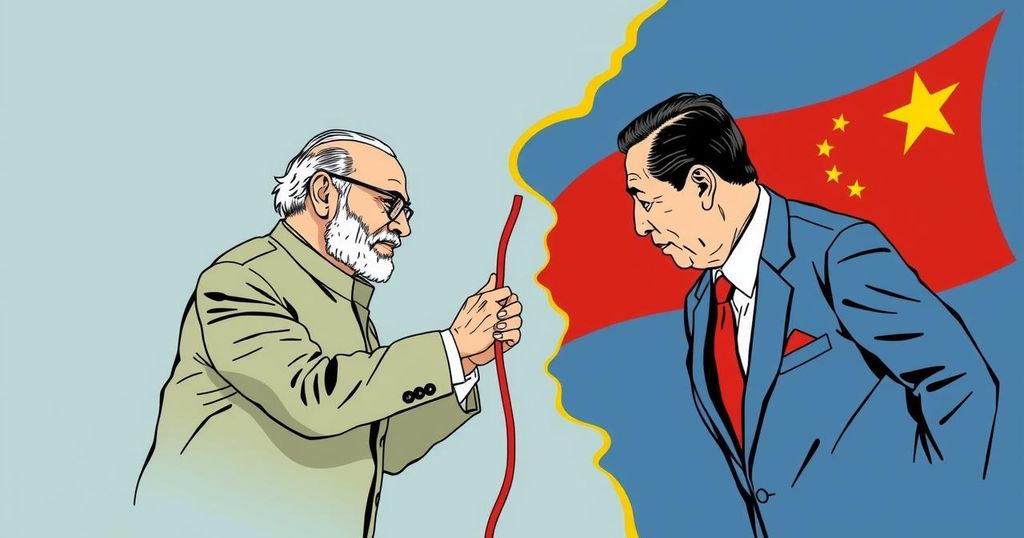India and China have agreed to establish patrolling arrangements along their disputed Himalayan border to de-escalate tensions stemming from the 2020 Galwan Valley clashes, as announced by Indian foreign secretary Vikram Misri. While specific disengagement details remain unspecified, this development occurs ahead of a pivotal BRICS summit involving prominent nations, including China.
India and China have reached an agreement to de-escalate border tensions along the contested Himalayan border, as stated by India’s foreign secretary, Vikram Misri. This agreement comes in response to the hostilities that began in 2020, specifically referencing the violent clashes in the Galwan Valley, which resulted in casualties for both nations—the first such fatalities since 1975. Mr. Misri confirmed that arrangements for patrolling have been established along the Line of Actual Control (LAC), promoting disengagement and resolution of the disputes that arose in recent years. While specifics regarding the disengagement process were not disclosed, this announcement marks a significant step in improving relations between the two nuclear-capable countries, with Mr. Misri’s comments coinciding with Indian Prime Minister Narendra Modi’s impending travel to Russia for a BRICS summit that includes China. Nevertheless, there was no confirmation provided regarding a potential bilateral meeting between Mr. Modi and Chinese President Xi Jinping. Previous dialogues and military discussions over the past few years had not led to significant developments, notwithstanding incidents of conflict in 2021 and 2022. The underlying issues stem from a poorly defined border that stretches approximately 3,440 kilometers, which has resulted in numerous confrontations due to shifting geographical markers and infrastructural developments along the frontier. These border tensions have historically strained India-China relations, going back to the 1962 war where India faced considerable losses.
The India-China border issue has a profound historical context characterized by lengthy and complex territorial disputes. Following the 1962 Sino-Indian War, which ended with Indian defeat, tensions have persisted, particularly along the ill-defined 3,440-kilometer frontier. The Galwan Valley clashes of 2020 marked a significant escalation in conflicts, resulting in fatalities for both sides. Despite a series of diplomatic and military discussions over the last four years aimed at resolving these issues, substantive progress has remained elusive. The recent agreement on patrolling arrangements signifies a possible shift in diplomatic strategy that seeks to stabilize tensions that have historically altered the landscape of India-China relations, impacting both geopolitical dynamics and trade relations.
In conclusion, the agreement between India and China to de-escalate border tensions signifies a critical development in their bilateral relations, especially in light of the ongoing disputes stemming from the Galwan Valley clashes. While specifics of the disengagement process remain unclear, this accord is a stepping stone towards managing disagreements and fostering cooperation between two powerful nations. The resolution of border tensions not only holds implications for regional stability but also influences economic interactions between these significant Asian powers. The upcoming BRICS summit may further illuminate the future trajectory of India-China diplomatic relations.
Original Source: www.bbc.com







